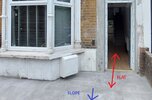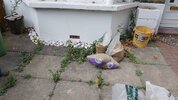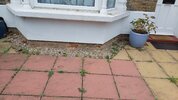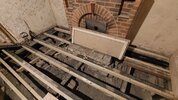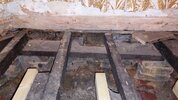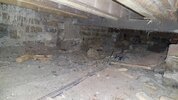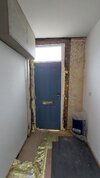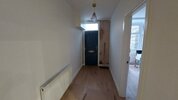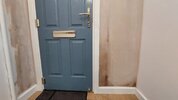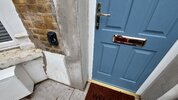Before
@ree goes apoplectic (again) - I have to say that I agree with him and others that raising the ground level and blocking the air bricks was a bad idea; the underfloor void requires through ventilation to prolong the life of the suspended floor.
However (and again I could be wrong), I don't see that your current damp patches are down to 'rising damp'; this is my rationale:
Although, you have lifted the front yard, you have done nothing fundamentally different to what you had originally. Before any work was carried out, the render was already down to ground level and the DPC was already breached...
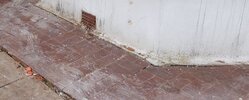
But, as you saw from the work inside, the ground was dry and the joists were sound.
I have a similar situation - my rendered solid walls come straight down to a concrete back yard. Without significant ingress from water elsewhere, the ground beneath my house is dry - the concrete acts as a sort of raincoat. Not nearly best practice, but I don't have rising damp.
As I said earlier, I believe the damp around the doorway is from water ingress around the doorframe and off of the bay, through the cracked render and other defects; being trapped inside by the render coating.
IMHO, your photos in post #15 tend to confirm this - the level of the water marks are high, and the change in damp pattern is very 'reactive' to the weather conditions.
It may also be a coincidence that the only other two damp patches are either side of the gutterless bay.
If there was also significant ingress from the air brick, I would suspect that the damp patches would appear closer to the front of the bay, rather than the far sides.
Yes, you need to address the subfloor ventilation and ideally fix the breached DPC, add french drains etc.
But fixing the render cracks and ensuring water from the bay is effectively removed from the walls, may also be a good idea.
